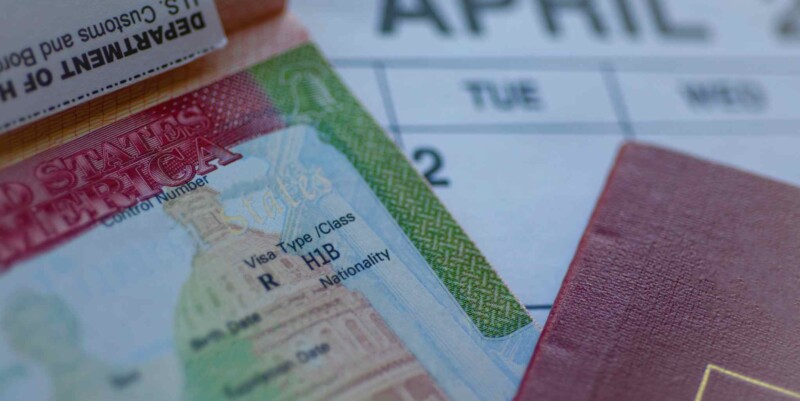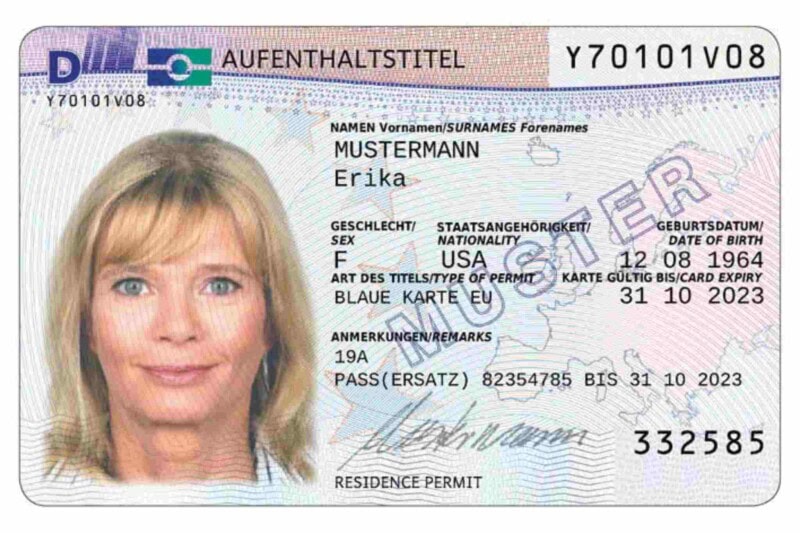Discover the Most Accessible Visas for Working Abroad in 2025

If you’re considering working overseas, this article explains the main types of work permits and how to obtain one, and highlights the easiest countries to get a work visa in 2025. You’ll also find practical tips for meeting eligibility requirements, gathering documents, and submitting a successful application.

Find the Best International Medical Insurance
- Compare multiple quotes and coverage options
- Work with an insurance expert at no additional cost
- Find the best plan for your needs and budget
Key Takeaways
- Visa rules are evolving in 2025: Countries like New Zealand and Australia are streamlining work visa requirements, making it easier for skilled professionals to relocate.
- Digital nomad visas are booming: Portugal, Spain, and Estonia offer flexible options for freelancers and remote workers, often with favorable tax or lifestyle benefits.
- Health insurance is mandatory: Nearly all long-stay work visas require applicants to have comprehensive health insurance; standard travel insurance is usually insufficient.
- Family relocation is often possible: Many work visas allow dependents to accompany the main applicant, but additional documentation and proof of financial support are required.
- Know the fastest pathways: EU citizens enjoy unrestricted access throughout Europe, while Americans can leverage special treaty-based visas. Targeting countries with high labor demand improves your chances.
What Is a Work Visa?
A work visa is a country’s official authorization for a foreign national to hold a job or conduct business within its borders.
It changes your status from a visitor to a recognized participant in the local economy and, in some cases, can even pave the way to permanent residency or citizenship.
Holding a work visa also means having to comply with local laws, taxes, and policies. Tax rates vary widely depending on the country and your income level.

While some destinations, such as certain UAE free zones, have very low or zero income tax, most apply standard taxation. Understanding these rules before relocating is essential.
Securing the correct visa is the first and most important step in working abroad. Every other part of your international move depends on it.
Types of Work Visas
Work visas come in many forms, tailored to different professional paths, from traditional employment to self-employment and investment opportunities.
Employer-Sponsored Visas
Employer-sponsored visas are the most traditional route, where a company provides a job offer and handles most of the immigration paperwork.
These permits are generally tied to the employer, and requirements, such as skill level, qualifications, or salary thresholds, vary by country.
- Duration: Typically 1–5 years, renewable in many countries
- Example: H-1B visa (USA), Tier 2 Skilled Worker visa (UK)
- Family: Dependents are often allowed to accompany the main applicant
- Best for: Professionals with a job offer and employer sponsorship
Intra-Company Transfer (ICT) Visas
ICT visas are for employees of multinational companies temporarily transferred to a branch, subsidiary, or affiliate in another country.
Unlike standard employer-sponsored permits, the employee already works for the company, and the move is internal.
- Duration: Usually 1–3 years, depending on role and country
- Example: UK Intra-Company Transfer Visa, EU ICT Directive
- Family: Dependents are usually permitted
- Best for: Employees relocating within their current company for managerial or specialist roles
Skilled Worker and Talent Visas
Skilled worker visas are designed for applicants with in-demand qualifications or specialized skills.
Eligibility is usually based on factors such as age, education, work experience, and language proficiency, often assessed through a point-based system.
Under these programs, your qualifications are the primary factor for approval.
- Duration: Typically 2–5 years, renewable or convertible to permanent residency
- Example: Canada Express Entry, Australia Skilled Worker visa (Subclass 482)
- Family: Dependent visas are usually allowed
- Best for: Professionals in tech, healthcare, engineering, and other specialized fields
EU Blue Card
The EU Blue Card program is designed to attract highly skilled non-EU workers.
It allows professionals with a qualifying job offer to live and work in participating EU countries and often provides a pathway to permanent residency.
- Duration: 1–4 years, depending on the host country; often renewable
- Example: EU Blue Card (Germany, France, Netherlands, etc.)
- Family: Spouses and children can typically join, with streamlined application processes
- Best for: Skilled professionals starting a new role in the EU

Digital Nomad and Self-Employment Visas
Many countries offer digital nomad visas, which allow you to work remotely without a local employer.
Applicants must provide proof of steady remote income – generally between €2,500 and €4,000 per month – along with health insurance and a clean criminal record.
- Duration: Typically 6 months–2 years, with possible extensions up to 5 years
- Example: D8 visa (Portugal), Digital Nomad visa (Estonia)
- Family: Some countries allow dependents; check local rules
- Best for: Freelancers, remote workers, online business owners
Read More: Explore the different types of digital nomad insurance and find the best plan based on your needs and lifestyle.
Working Holiday Visas
A working holiday visa is a special permit that allows young professionals or students, typically aged 18 to 35, to travel and work temporarily in a foreign country.
These are designed to help finance travel while providing short-term employment opportunities.
- Duration: 6–24 months
- Example: Working Holiday visa (Australia, Japan, Canada)
- Family: Typically not available for dependents
- Best for: Young professionals and students seeking short-term work abroad
Seasonal or Temporary Worker Visas
Seasonal or temporary worker visas are intended for short-term employment in industries such as agriculture, hospitality, or tourism.
Unlike working holiday visas, these focus on fulfilling labor needs rather than travel or cultural experiences and usually have no age restrictions.
- Duration: Varies by country and sector, usually 3–12 months
- Example: H-2B visa (USA), Seasonal Agricultural Worker Program (Canada)
- Family: Often not permitted
- Best for: Seasonal workers, farm laborers, and hospitality staff
Investor and Entrepreneur Visas (Golden Visas)
Governments offer investor and entrepreneur visas to attract capital and create local jobs.
Entrepreneur visas grant the right to work by starting an active, job-creating business.
Investor visas, also known as “Golden Visas,” allow residency through qualifying investments, such as real estate, business capital, or government bonds.
- Duration: Varies by country, typically 1–5 years, and often renewable
- Example: Golden Visa (Greece, Portugal)
- Family: Usually allows dependent spouses and children
- Best for: People with sufficient capital to start a business or invest
Read More: Countries You Can Visit Without a Visa
How to Get a Work Visa: Quick Guide
While each country has its own rules, most work visas follow a similar process:
- Determine your eligibility: You first need a concrete reason to apply, such as a signed job offer, a funded business plan, or proof of steady remote income.
- Gather the required documents: You’ll typically need:
- A passport that is valid for at least six months beyond your intended stay
- Bank statements to prove you have sufficient funds
- Biometric-standard photos taken against a white background
- Police clearance certificates from countries you have recently lived in
- A medical certificate or proof of comprehensive health insurance
- Any official documents specific to your work visa (such as degrees, work contracts, or proof of income). Some documents, such as birth certificates or diplomas, may require an apostille or certified translation.
- Submit your application: Many countries allow online applications, but some require in-person submission at a consulate. You may also need to book a biometric appointment for fingerprints and photos well in advance, as slots often fill quickly.
- Attend interviews or provide employer sponsorship letters: Certain permits, particularly employer-sponsored or skilled worker visas, may require additional documentation or an interview.
- Wait for processing: Approval times vary by country and visa type, ranging from a few weeks to several months. The most important rule during the waiting period is to avoid making irreversible plans, such as booking non-refundable flights or quitting your job, until your permit is officially granted.

Find the Best International Medical Insurance
- Compare multiple quotes and coverage options
- Work with an insurance expert at no additional cost
- Find the best plan for your needs and budget
The 10 Easiest Countries to Get a Work Visa
The following countries have clear visa requirements, high demand for foreign talent, and modern application processes.
1. Germany
Germany offers one of the easiest work visas in Europe due to high demand for skilled workers and its Skilled Immigration Act.
This legislation places a high value on proven professional experience and vocational training alongside traditional university degrees.
Work Visa Options
- EU Blue Card: This is the most straightforward pathway to a German work visa for professionals with a university degree. The minimum salary requirement is €48,300 per year, but it drops to around €45,760 for occupations such as IT and engineering that are in short supply. It also offers an accelerated path to permanent residency, taking just 21 months if you can demonstrate German language proficiency.
- Opportunity Card (Chancenkarte): This serves as a one-year job-seeker permit that allows qualified applicants to move to Germany first and then secure employment. Eligibility is based on a points system that considers qualifications, age, work experience, and German language skills.
- IT Specialist Visa: Applicants in the tech industry can qualify without a university degree if they have at least three years of relevant experience in the past seven years, provided it’s verifiable and supported by German language skills.

Application Tips
- Prepare all required documents well in advance: Gather certified degrees, employment references, CV, and translations well ahead of time to avoid delays.
- Ensure your health insurance is visa-compliant: Standard travel insurance is often insufficient and can delay your application, so make sure your German health insurance meets the visa requirements.
2. Canada
Canada used to be one of the easiest countries to move to and work in. However, it has shifted from attracting generally skilled people to targeting people who fit into a needed category.
Work Visa Options
- Express Entry System: This is the main gateway for skilled workers. Candidates receive a score through the Comprehensive Ranking System (CRS), based on factors like age, education, and work experience. The points required to receive an invitation are often high, typically in the 400s or low 500s.
- Provincial Nominee Program (PNP): This offers a fast track for skilled workers. Securing a provincial nomination adds 600 points to your CRS score, virtually guaranteeing an invitation to apply for residency.
- Category-Based Selection: The federal government now hand-picks candidates with experience in healthcare, STEM fields, or skilled trades such as carpentry and plumbing. Transport and agriculture workers are also targeted, with preference given to applicants with strong French language skills.
Application Tip
- Get private health insurance: New residents in major provinces like Ontario and British Columbia face a mandatory three-month waiting period for public health coverage. Having private Canadian health insurance during this gap is essential, as any medical emergency could otherwise result in significant personal expenses.
Read More: Health Insurance When Working Abroad
3. Australia
Australia’s immigration system is undergoing major changes in 2025. It’s shifting away from creating “permanently temporary” workers toward building clearer, more stable paths to residency for skilled talent.
Work Visa Options
- Skills in Demand Visa (Specialist Skills Pathway): This new flagship permit is designed for top talent. It requires applicants to earn an annual salary over AUD 135,000 and offers a fast-track processing time of just seven days.
- Core Skills Pathway: This route is for other professionals and requires a job on the new Core Skills Occupation List with a salary above AUD 70,000. Like the Specialist Pathway, it offers a more straightforward path to permanent residency.
- General Skilled Migration Visas (189 & 190): These older permits still provide a direct path to permanent residency, but without the high salary requirements of newer programs, which remain a barrier for many. However, competition for state-nominated visas remains fierce.
Application Tips
- Start the application process early: Some visas, especially state-nominated ones, have strict quotas or limited spots. Submit your documents as soon as you’re eligible.
- Complete any required skills assessments: Certain occupations require an official skills assessment from a recognized Australian authority before you can apply, so complete this before applying to avoid delays.
- Arrange health coverage: Most work permits require proof of adequate Australian health insurance. Ensure you have appropriate coverage for the duration of your stay to meet visa requirements and avoid unexpected medical costs.
4. New Zealand
New Zealand is changing its work visa rules for 2025 to make it easier for companies to hire overseas talent.
Work Visa Options
- Accredited Employer Work Visa (AEWV): This is the main path to working in New Zealand. The strict median wage rule has been removed, so employers only need to pay the accepted market rate. Applicants can now qualify with just two years of relevant work experience.
- Green List: New Zealand’s Green List identifies its most-needed professions. Jobs on Tier 1 allow immediate residency applications, while Tier 2 jobs permit applications after two years in the role. Employers must pay the accepted market rate, which requires immigration officer approval and can add some uncertainty.

Application Tips
- Verify job and employer eligibility: The AEWV requires your employer to be officially accredited. Confirm that your prospective employer is listed and authorized before applying to avoid delays or rejection.
- Negotiate a clear salary agreement: AEWV applicants must be paid the accepted market rate, which requires approval from immigration. Ensure your contract clearly states the salary and role responsibilities to prevent disputes or delays.
- Plan for residency timing: If your job is on Tier 2 of the Green List, you must work in your role for two years before applying for residency. Factor this into your long-term planning, including housing, finances, and career progression.
- Get health insurance early: Most work visas require proof of health insurance for New Zealand. Securing this before arrival helps you comply with the rules and protects you while abroad.
5. Portugal
Portugal is one of Western Europe’s easiest entry points because its immigration system is built for independent workers. It’s ideal for freelancers, remote workers, and anyone not tied to a local company.
Work Visa Options
- D8 Digital Nomad Visa: This is designed for remote workers earning at least €3,280 per month from foreign sources. It allows you to live in Portugal while continuing employment for a company or clients abroad.
- D7 Visa: Suitable for people with passive income, such as pensions, investments, or rental income. The minimum income requirement is €820 per month, making it one of the most accessible residency pathways in Europe.
- Job Seeker Visa: This is for applicants pursuing traditional employment in Portugal. It allows you to move to the country first and secure a job within 120 days.
Application Tips
- Prepare proof of income: For D8 or D7 visas, ensure you have bank statements, contracts, or investment documents demonstrating sufficient and stable income.
- Plan for bureaucracy delays: Portugal’s immigration procedures can be slow. Schedule appointments early, track application status, and follow up proactively to avoid unnecessary delays.
- Secure private health insurance: Access to the public healthcare system (SNS) is only available after receiving your residency card, which can take months, so securing private health insurance in Portugal is a must during this initial period.
Read More: The Best Countries for Digital Nomads and Remote Workers
6. The United Arab Emirates
The UAE is a major destination for global talent, with more work opportunities than it can reasonably fill.
The biggest financial benefit is the country’s zero personal income tax policy, which means you keep everything you earn.
Work Visa Options
- Standard Work Visa: Most people use a standard work visa sponsored by their employer. However, these roles are usually reserved for skilled workers within specific niches.
- Golden Visa: This grants residency without a local sponsor. It is open to investors and top professionals, and the standard route requires a two-million AED real estate investment.
Application Tips
- Budget for upfront expenses: Rent and living costs in cities like Dubai can be high, and landlords often request a full year’s rent upfront or in one or two cheques.
- Confirm health coverage: Health insurance is mandatory. Employers provide basic coverage for you, but additional insurance may be needed for family members.
7. The Netherlands
For many years, the Netherlands has been regarded as one of the easiest countries to move to and work in. This is largely because the Dutch government partners with trusted companies to reduce bureaucratic hurdles for skilled workers.
Work Visa Options
- Highly Skilled Migrant Program: This is the main pathway, which requires a recognized employer sponsor. Salary requirements are age-based. Applicants under 30 need only earn about €4,129 per month, while those 30 and over need to earn about €5,670. Applicants must have a job offer before applying.
- Dutch-American Friendship Treaty: This unique shortcut allows U.S. citizens to start a business in the Netherlands with a € 4,500 investment.

Application Tips
- Verify your employer: Only employers officially recognized by the Dutch Immigration and Naturalisation Service (IND) can hire Skilled Migrants. Check your employer’s sponsorship status before applying.
- Confirm your job offer before applying: You cannot submit the Skilled Migrant application without a confirmed job offer. Ensure all details (position, salary, start date) are clearly stated in your contract.
- Register at your municipality: Complete your registration at the local municipality within five days of arrival to secure your residence permit, tax registration, and access to public services.
- Arrange health insurance: All residents must have Dutch health insurance. Plan to arrange this as soon as your visa is approved or your residence permit is issued.
8. Ireland
Ireland has a pressing need for skilled workers, fueled by its tech and pharma sectors.
To attract the right talent, the country offers a welcoming work permit process.
Work Visa Options
- Critical Skills Employment Permit: The main route for professionals. It covers jobs on an in-demand list paying at least €38,000/year and leads to Stamp 4 status after two years, allowing you the freedom to work for any employer without needing a new permit.
Application Tips
- Start your housing search early: Dublin has a major housing shortage, so begin looking well in advance to secure affordable accommodation.
- Verify job eligibility: Before applying for the Critical Skills Employment Permit, ensure your role is on the official in-demand list.
- Consider private health insurance: Health insurance is not mandatory in Ireland. However, securing private coverage is strongly recommended to get faster access to specialists and cover any gaps in public healthcare.
9. The Baltics (Estonia, Latvia, Lithuania)
The Baltic states of Estonia, Latvia, and Lithuania are highly digital nations with booming startup scenes and strong demand for tech and remote talent.
They are an affordable and innovative alternative to Western Europe.
Work Visa Options
Each country has its own specialty:
- Estonia:
- e-Residency: A digital ID that allows you to establish and manage an EU company online with a 0% tax on reinvested profits.
- Digital Nomad Visa: This visa enables you to live in Estonia while working remotely if you earn over €4,500/month. You can use your e-Residency company to pay yourself the required salary.
- Latvia:
- EU Blue Card: A fast-track work permit for highly qualified workers. To qualify, you must have a confirmed job offer from a Latvian employer for at least one year. The job must pay at least 1.5× the national average (about €2,100/month), and a university diploma is usually required.
- Lithuania:
- Startup Visa: This is designed for entrepreneurs with innovative and scalable business ideas. Instead of a job offer, you must submit a detailed business plan to a special committee for approval. You must also show sufficient personal savings for the first year, typically around €20,000.
Application Tips
- Verify income or savings: Before applying, ensure your salary (for Latvia) or personal savings (for Lithuania) meet the minimum requirements.
- Consider cost-of-living trade-offs: While salaries are generally lower than in Western Europe, living expenses are also more affordable, so plan your budget accordingly.
- Review digital program requirements carefully: Estonia’s e-Residency and Digital Nomad Visa have specific income and company setup rules, so make sure you meet all criteria before applying.
- Plan for fast-track options: Latvia offers a 10-day processing option for qualified applicants, so ensure your documents are complete to take advantage of it.
- Arrange health coverage: Health insurance is mandatory for Estonia’s Digital Nomad Visa, Latvia’s EU Blue Card, and Lithuania’s Startup Visa. Arrange it before arrival to meet visa requirements and cover medical costs.
10. Spain
Spain has long been a top lifestyle destination. The country now offers a modern visa that embraces this reputation and offers major financial benefits.
Work Visa Options
- Digital Nomad Visa: The main pathway requires applicants to earn over €2,800 per month from foreign sources. This pathway provides a major financial benefit by allowing eligible applicants to pay a flat 24% income tax under the Beckham Law.
Application Tips
- Schedule your NIE appointment early: The NIE is required for banking, healthcare, and most administrative tasks. Before traveling, schedule this at a Spanish consulate in your home country.
- Be patient with bureaucracy: Obtaining your residency card after arrival can take several months due to Spain’s slow and complex administrative processes.
- Arrange health coverage: Health insurance in Spain is mandatory for obtaining a residence permit, so secure a plan before you arrive, either through the public system, a private insurer, or an international plan recognized by Spanish authorities.
The Easiest European Countries to Get a Work Visa
For EU citizens, your passport effectively acts as a work permit across Europe. You can work in any other EU country without needing a visa.
This freedom also extends to EFTA countries such as Switzerland, Norway, Iceland, and Liechtenstein.
Beyond Europe, many younger EU citizens (usually under 31 or 35) take advantage of Working Holiday Visas to live and work temporarily in countries like Australia and New Zealand.
Canada is another attractive option, and the Canada-European Union Comprehensive Economic and Trade Agreement (CETA) makes it easier for EU professionals to secure a work permit.
Read More: European Health Insurance Options
The Easiest Countries to Get a Work Visa as an American
U.S. citizens can access special work visas based on international treaties. These permits are often faster and simpler to obtain than standard options.

Some popular choices include:
- Australia: The E-3 visa is a preferred alternative to the competitive H-1B lottery for skilled professionals.
- The Netherlands: The DAFT visa allows entrepreneurs to start a business with a minimal investment of just €4,500.
- Canada and Mexico: The TN visa under the USMCA agreement provides a fast-track option for professionals in eligible occupations.
Read More: The Most Popular Countries for U.S. Families
Countries Looking for Immigrants
Many developed countries are experiencing labor shortages and need skilled workers to sustain economic growth.
As a result, these nations are actively competing for foreign talent, creating a significant advantage for professionals looking to relocate.
Countries that are recruiting immigrants often offer simpler and faster visa processes. Knowing which nations are hiring allows you to target your job search more effectively and increases your chances of obtaining a work permit with less hassle.
The Easiest Places to Get a Job in 2025
The following countries have the most urgent labor needs this year:
- Canada: Targets shortages in healthcare, STEM, and skilled trades through federal and provincial programs.
- Australia: Focuses on engineering, construction, and medical fields under its updated high-skilled visa system.
- Germany: Seeks professionals in skilled trades, IT, and healthcare, supported by the Skilled Immigration Act.
The Work Visa is Just a Starting Line
Getting your visa marks the end of the bureaucratic race, but it’s really the starting line for your life abroad. The first six months in a new country bring their own challenges and unexpected rewards.
Keep these two key tips in mind to make those first months smoother.
First, double-check your health insurance. Long-stay visa applications require an annual or expat plan, not a standard travel policy, which can lead to a rejected application.

Find the Best International Medical Insurance
- Compare multiple quotes and coverage options
- Work with an insurance expert at no additional cost
- Find the best plan for your needs and budget
Second, arrive with a financial buffer. Saving three to six months of living expenses gives you a safety net to handle setup costs and unexpected expenses.
Solid preparation is the final step in turning your visa into a successful new life abroad.
Ready to Make the Move? Explore the Best Countries to Live in as an Expat in 2025 and the Easiest Countries to Get Dual Citizenship to find your next destination abroad.
Frequently Asked Questions
How do you get a work visa?
The process usually involves four main steps: secure a job offer or business plan to prove eligibility, gather all required documents, submit your application, and wait for a decision before making any travel plans.
Do I need health insurance to get a work visa?
Yes. Nearly every long-stay work visa requires proof of comprehensive health insurance valid for the entire duration of your stay. A short-term travel policy is typically insufficient and could result in a rejected application.
How do I obtain a work visa for Canada?
Skilled workers typically apply through the Express Entry system. Success often requires a Provincial Nominee Program (PNP) nomination or being selected in a category-based draw for in-demand fields like healthcare, engineering, or skilled trades.
How long is a work visa valid?
Duration depends on the visa type. Working holiday visas are typically valid for one year, while skilled worker visas often last two to five years and can lead directly to permanent residency.
What does a work visa look like?
A work visa may appear as a sticker, called a vignette, in your passport, or as a separate plastic ID card, known as a biometric residence permit, which is usually collected after you arrive in the country.
Which country is easy to get a work visa in Europe?
For non-EU citizens, Germany, the Netherlands, and Portugal are top choices due to clear requirements and high demand for skilled workers.
What is the easiest work visa to get?
The “easiest” work visa is one with a predictable process, clear requirements, high approval rates, and a specific, stated demand for your skills, as seen in countries like Germany.
Can I apply for a work visa while I’m in the country on a tourist visa?
Almost always no. In most countries, you cannot apply for a work visa while on a tourist visa. This practice, which is known as “visa switching,” is typically prohibited and can lead to penalties. You generally must apply from your home country or your country of legal residence before traveling.
Can my family come with me on a work visa?
Yes. Most skilled worker visas allow you to bring your immediate family, such as your spouse and children, as dependents. You will need to prove you can financially support them, and they usually must apply for their own linked dependent visas.
Do I have to pay taxes in two countries?
Most countries have tax treaties to prevent double taxation, so you typically only pay taxes in the country where you live and work. U.S. citizens, however, have worldwide tax obligations and should seek specialized advice before moving abroad.
What’s the biggest mistake people make on their application?
The biggest mistake is not following the most current official checklist for the specific visa. Treat that checklist as your only source of truth and follow every detail perfectly, from photo sizes to document translations.
Read More
- Top 10 International Health Insurance Companies
- The Best Healthcare in the World: Country Rankings
- The Healthiest Countries in the World in 2025
- The Cheapest Countries to Live in the World in 2025
- Countries With Reciprocal Healthcare Agreements
About the Author:Richard Reynolds is a seasoned traveler who has lived in multiple countries. For over a decade, he has specialized in simplifying complex topics that global citizens face, such as visas, taxes, and asset protection, helping people unlock the possibilities of a global life.
